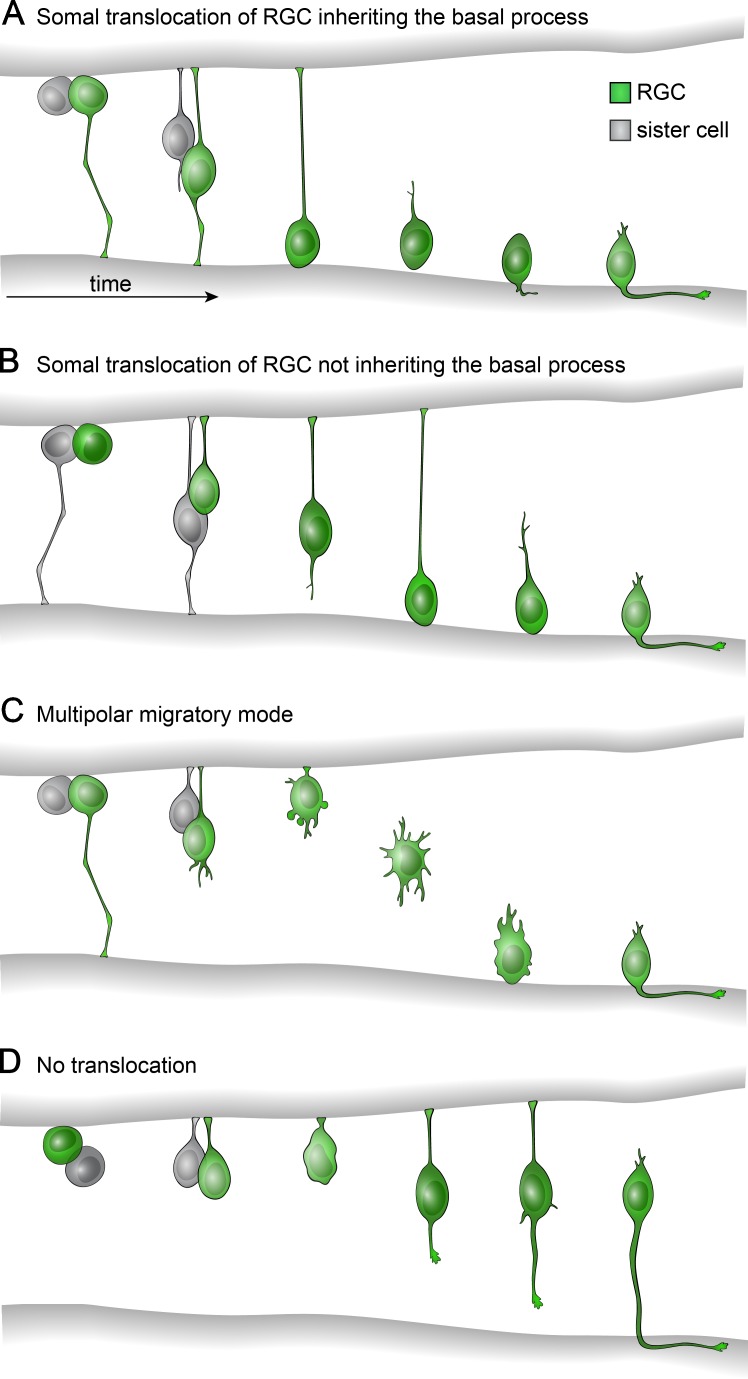Figure 1.
Radial migration modes used by RGCs. RGCs (green) are born at the apical side of the retina after a progenitor division that also gives rise to a sister cell (gray). The RGC may transit basally in several different ways. (A) Most commonly, the RGC inherits the progenitor cell’s basal process and moves by somal translocation. (B) In ∼20% of cases, the sister cell inherits the basal process, forcing the RGC to use a slower version of somal translocation as it regrows its basal process. (C) Multipolar migration mode, rare in wild-type RGCs but commonly seen after cytoskeletal disruptions that affect basal process attachment. The RGC detaches its apical process to initiate this mode. (D) RGCs that lack a basal process and are prevented from releasing their apical process do not migrate efficiently, causing them to differentiate at ectopic localizations. Figure republished from Icha et al. (2016).

